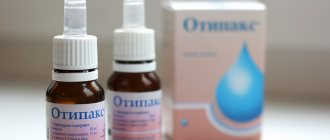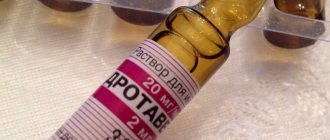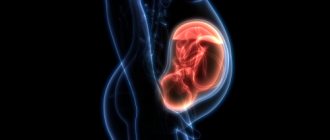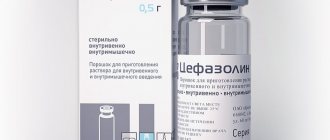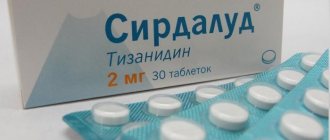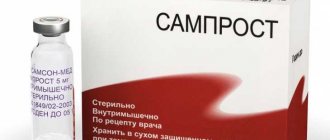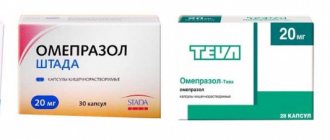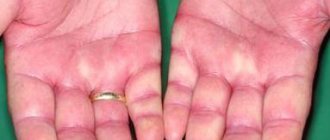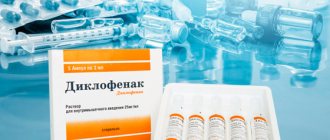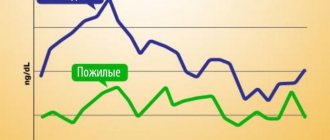pharmachologic effect
The active component is a peripheral vasodilator (“vaso” - vessels + “dilator” - dilator), which acts primarily on venous vessels. The drug can stimulate the production of a special relaxing endothelial factor - nitric oxide in the vascular endothelium.
Under the influence of this factor, the intracellular enzyme guanylate cyclase is activated, which leads to an increase in the vasodilating mediator - cGMP.
As a result, the need of myocardial cells for O2 decreases, which is explained by a decrease in afterload and preload . pronounced coronary-dilating effect .
The active substance can reduce blood flow to the right atrium, reducing pressure in the pulmonary circulation and reducing the severity of negative symptoms during pulmonary edema . In areas with reduced blood circulation, a redistribution of coronary blood flow is noted under the influence of Monosan.
In patients who suffer from angina pectoris , heart disease tolerance (resistance) to physical activity increases markedly. Headaches often occur with the use of nitrates, which is explained by the ability of medications to expand the lumens of blood vessels in the dura mater and brain.
Monosan is able to reduce the rate of intraplatelet synthesis of Thx, as well as inhibit platelet aggregation. Cross tolerance is characteristic. Sensitivity to the active substance is restored quite quickly after a break in treatment.
Pharmacodynamics and pharmacokinetics
After oral administration, the antianginal effect is registered within 30-45 minutes and can last for almost 10 hours. The active substance is quickly and completely absorbed from the lumen of the digestive tract. Isosorbide mononitrate has a high bioavailability rate of 100%, which is explained by the absence of a first-pass effect through the hepatic system.
The Tmax indicator after administration is 1 hour. Plasma concentration varies only slightly due to individual differences. The individual level of the active substance in the blood plasma is 100 mg/ml. There is no binding to plasma proteins. Pharmacokinetics in dosages from 10 to 80 mg are characterized by linearity.
metabolized in the renal system, in contrast to Isosorbide dinitrate , which is metabolized in the hepatic system. As a result of metabolic reactions, 3 components are formed: 2 isosorbide-5-mononitrate glucuronides and isosorbide. The half-life is 4-5 hours. 2% is excreted unchanged through the renal system, 98% in the form of glucuronic metabolites. The renal clearance rate is 115 ml/min. The pharmacokinetics of the drug does not change significantly with renal and hepatocellular failure .
Analogs
Analogs and substitutes for a drug that corrects the condition of the cardiovascular group of organs should be selected with special care, without the desire to purchase the cheapest drug. Fortunately, pharmaceuticals are constantly evolving and there are several equivalent analogues suitable for replacing Monosan in complex therapy. Monosem is an effective remedy, but it is worth knowing about alternative options.
| a drug | active substance | manufacturer | price |
| Monocinque | isosorbide-5-mononitrate | Istituto Lusopharmaco (Italy) | from 91 RUR |
| Pectrol | isosorbide-5-mononitrate | Vector-Medica (Russia) | 73-100 RUR |
| Efox long | isosorbide mononitrate | Schwarz Pharma Productions GmbH (Germany) | 230-270 RUR |
| Nitrosorbide | isosorbide dinitrate | Veropharm (Russia) | from 50 rub. |
| Cardiket | isosorbide dinitrate | USB Pharma GmbH (Germany) | 8-70 RUR |
Thus, Monosan substitutes predominantly contain isosorbide mononitrate as an active substance. Therefore, the effect of these drugs will be similar, including side effects. You just need to choose the right dosage to maintain the benefits of taking it and carefully watch the instructions for use, which may differ due to other added substances.
Contraindications
- vascular collapse;
- shock;
- arterial hypovolemia and arterial hypotension (decrease in systolic blood pressure to 100 mm Hg; drop in diastolic blood pressure below 60 mm Hg; decrease in venous central pressure to 4-5 mm Hg);
- cardiac tamponade;
- acute stage of myocardial infarction (with severe arterial hypotension);
- left ventricular failure and low diastolic blood pressure;
- toxic pulmonary edema;
- breast-feeding;
- angle-closure form of glaucoma ;
- diseases that provoke an increase in intracranial pressure (traumatic brain injury, hemorrhagic stroke and others);
- individual hypersensitivity;
- Age limit: up to adulthood.
Relative contraindications:
- constrictive pericarditis;
- tendency to orthostatic disorders of vascular regulation;
- mitral stenosis;
- elderly age;
- severe renal failure;
- liver failure (the risk of developing methemoglobinemia increases);
- hypertrophic cardiomyopathy (increased angina attacks);
- thyrotoxicosis;
- severe anemia;
- aortic stenosis.
Indications and contraindications
Monosan is rarely prescribed as monotherapy; in most cases it is included in a combination treatment complex. Indications for use:
- angina pectoris in patients with coronary heart disease;
- chronic heart failure;
- hypertension.
Consequences of arterial hypertension
Contraindications for use:
- hypovolemia;
- hypotension;
- vascular collapse;
- acute heart attack;
- left ventricular failure;
- toxic pulmonary edema;
- increased intracranial pressure;
- glaucoma;
- lactation period.
The drug is not recommended for children and adolescents under 18 years of age. It is prescribed with extreme caution to patients with the following pathologies:
anemia;- mitral stenosis;
- cardiomyopathy;
- pericarditis;
- disorders of the thyroid gland;
- liver diseases;
- renal failure.
During pregnancy, Monosan can be prescribed in a minimal dosage. Taking the drug is permitted if the woman’s health is under serious threat, and replacement therapy does not have the desired therapeutic effect.
Side effects
Digestive tract:
- burning sensation in the tongue area;
- vomit;
- feeling of dry mouth;
- nausea.
The cardiovascular system:
- tachycardia;
- feeling of heat in the body;
- facial skin hyperemia;
- nitrate headaches;
- pronounced drop in blood pressure ;
- dizziness;
- orthostatic collapse;
- increased frequency and intensification of angina attacks (a kind of paradoxical reaction).
Nervous system:
- slowing down the speed of motor and mental reactions;
- increased drowsiness ;
- stiffness;
- blurred visual perception.
Other reactions:
- establishment of tolerance (cross form - in relation to other nitrates);
- exfoliative dermatitis;
- specific skin rashes.
Monosan, instructions for use (Method and dosage)
Tablets are used only per os. The manufacturer recommends taking the tablets with water and swallowing them whole. Assessing the severity of the underlying disease and concomitant pathology, the treating doctor selects a treatment regimen.
Treatment begins with taking 10-20 mg of Monosan 1-3 times a day. From the 3-4th day of treatment, the dosage regimen is adjusted depending on the clinical effect, possibly increasing to 20-40 mg twice a day. In some cases, the amount of medication is increased to 80 mg/day - the maximum daily dosage.
Similar drugs
Among the pharmacy assortment you can find quite a lot of drugs that have a similar effect to Monosan. Among the best, experts note such drugs as Efox, Monocinque, Pectrol, Nitroglycerin, Nitromint, Nitrocor, Trimetazidine and Preductal.
Structural
The preparations Efox, Monocinque and Pectrol have a composition similar to Monosan, based on the substance isosorbide mononitrate. Let's look at their features:
- Efox. German antianginal drug. Prescribed in complex therapy of heart failure. It is also used in the prevention of angina attacks in patients with ischemia and after a heart attack. Contraindications:
immunity of the body to the components of the composition;- cardiogenic shock;
- hypotension;
- acute form of myocardial infarction;
- severe stage of anemia;
- toxic form of pulmonary edema;
- breastfeeding period. There are also age restrictions (not recommended for use in children, adolescents and elderly patients). Efox is available in tablet form.
Prescribed half or a whole tablet twice a day. If necessary and if the drug is well tolerated, the dosage can be increased, but should not exceed 80 mg (4 tablets). The approximate cost for 50 tablets of 20 mg is about 130 rubles.
vascular collapse;
Monocinque. German peripheral vasodilator with vasodilating and antianginal effects. Used in the prevention of angina pectoris and in the treatment of heart failure. Contraindicated in pulmonary edema, hypotension, acute circulatory disorders, anemia, hypersensitivity to the composition.
Not recommended for the treatment of children, pregnant and lactating women. At the initial stage of treatment, half a tablet is prescribed twice a day. Then the dosage is increased to 1 tablet 2 times a day. If necessary, the patient can be prescribed a high dose of Monosan, but not more than 3 tablets (120 mg) per day. Price – within 180 rubles for the drug in the amount of 30 tablets of 40 mg.
Available in the form of tablets that must be taken after meals with plenty of liquid. Prescribed tablets are 40 or 60 mg, which are recommended to be taken in the morning, after breakfast. As prescribed by the doctor, the dose of the medicine can be increased to 80 mg (2 tablets). Price – within 175 rubles for 30 tablets of 40 mg and 240 rubles for 30 tablets of 60 mg.
Drugs with a similar mechanism of action
Products made on the basis of other components, but having a similar effect include:
- Nitroglycerin is one of the most inexpensive Russian peripheral vasodilators. The basis of the composition is the substance of the same name, nitroglycerin. Prescribed for:
angina pectoris;- acute heart attack;
- cardiac asthma;
- pulmonary edema;
- arterial hypotension;
- heart failure. It is prohibited for use in cases of pathologically low blood pressure, stenosis, cerebral hemorrhage, glaucoma, pregnancy, and breastfeeding. Available in various forms, each of which requires individual methods of administration.
According to experts, the fastest therapeutic effect is achieved with sublingual administration. The tablet must be placed under the tongue and dissolved until it is completely dissolved. The recommended dosage is up to three tablets per day. The approximate cost is 20 rubles for 40 tablets of 0.5 mg.
spasm of the coronary arteries;
Not recommended for the treatment of patients under eighteen years of age. Available in aerosol form. Shake the can vigorously before use. Open your mouth, hold your breath, spray one spray of aerosol under your tongue. If there is no immediate effect, repeat the procedure after 10 minutes. The cost is within 170 rubles per 10 ml of the drug.
A single dose is a tablet, which must be placed under the tongue and dissolved until completely dissolved. If there is no effect in a short period of time, you must take a new dose of Nitrocor. The daily dosage is determined by the doctor on an individual basis. Price - about 70 rubles for 40 tablets of 0.5 mg.
Trimetazidine is a Russian-made antihypoxic drug based on the substance trimetazidine. Prescribed for ischemia, chorioretinal vascular disorders, dizziness, vestibular pathologies.
Contraindications: liver and kidney diseases, pregnancy and lactation. Available in tablet form. It is prescribed as a tablet 2 to 3 times a day. It is not recommended to prescribe more than 60 mg per day. The cost of 60 tablets of 20 mg is within 20 mg.
- Parkinson's disease;
renal failure;
Overdose
Fainting, collapse, dizziness, redness of the skin, dyspnea, hyperpnea, methemoglobinemia , diarrhea syndrome , headaches, lethargy, weakness, reflex tachycardia, hyperthermia, visual disturbances, paralysis, increased intracranial pressure , convulsions, coma, vomiting, nausea, increased sweating.
General recommendations: place the patient in a horizontal position, perform gastric lavage procedures, prescribe enterosorbent medications , monitor vital signs, and correct them if necessary.
Specific therapy: in case of shock and severe arterial hypotension, blood volume is replenished. Dopamine and/or Norepinephrine infusion is performed in exceptional cases to improve blood circulation.
Adrenaline , Epinephrine and other related compounds is unacceptable When diagnosing methemoglobinemia hemodialysis , oxygen therapy , exchange blood transfusion are performed, and ascorbic acid in the form of sodium salt.
Overdose of the drug Monosan, symptoms and treatment
It is observed extremely rarely. Due to the fact that the nitrate ion interacts with hemoglobin, even after the use of organic nitrates in high doses, the concentration of nitrate ions in the blood plasma remains low enough that severe methemoglobinemia can develop. Symptoms : reflex tachycardia, weakness, dizziness, nausea, vomiting, diarrhea, flushing, headache, feeling of fear, orthostatic hypotension, in severe cases - cyanosis. Treatment: symptomatic - oxygen inhalation, raising the lower extremities upward, in case of taking a large number of tablets - gastric lavage. In the presence of methemoglobinemia, which is manifested by cyanosis, slow intravenous administration of methylene blue at a dose of 1 mg/kg body weight.
Interaction
The active substance can increase the concentration of dihydroergotamine in the blood. A decrease in the effectiveness of vasopressor drugs has been recorded. Barbiturates are able to reduce the concentration of isosorbide and accelerate its biological transformation.
Potentiation of the hypotensive effect of isosorbide mononitrate is recorded with simultaneous treatment with Tadalafil , tricyclic antidepressants, antipsychotics, Vardenafil , Sildenafil , diuretics, beta-blockers, vasodilators, PDE-5 inhibitors.
The antianginal effect is enhanced by treatment with Propranolol , Amiodarone and drugs from the CCB group ( Nifedipine , Verapamil ). When interacting with nitro compounds, the therapeutic effect of Norepinephrine (Norepinephrine) is significantly reduced.
Enveloping medications, astringents and adsorbents reduce the absorption rate of isosorbide. M-anticholinergic agents ( Atropine ) can increase intraocular pressure during simultaneous therapy with nitrates. A decrease in the severity of the antianginal effect (fall in blood pressure, increase in pulse) is observed during treatment with alpha-blockers and beta-blockers.
Interactions of the drug Monosan
When used simultaneously with antihypertensive drugs, antidepressants (MAO inhibitors), drugs containing ethyl alcohol, and dihydroergotamine, the hypotensive effect of Monosan may be enhanced. Concomitant use with sildenafil and other PDE inhibitors is contraindicated due to the risk of uncontrolled hypotension. Opioid analgesics significantly enhance the analgesic effect of Monosan in patients during the acute period of myocardial infarction. When taking heparin and Monosan simultaneously, the antiplatelet effect is enhanced. Atropine and other M-anticholinergic drugs, as well as sympathomimetics, reduce the effectiveness of Monosan.
special instructions
The medication is not used to relieve angina attacks. Monitoring blood pressure and heart rate is mandatory. If the drug must be used against the background of arterial hypotension, then at the same time it is necessary to prescribe drugs that have a positive inotropic effect.
With frequent use of the drug in high doses, tolerance develops. In such cases, after 3-6 weeks of therapy, a temporary break of 24-48 hours is required, or for 3-5 days with the prescription of other antianginal drugs.
The dosage reduction should be done gradually. The same applies to drug withdrawal; the dose is reduced in stages. Drinking alcohol-containing drinks is prohibited. The drug can slow down the speed of motor and mental reactions, which can affect the control of vehicles and complex mechanisms.
Rules for taking the drug 20 and 40 mg
The prescription of treatment depends on the patient’s diagnosis and the content of the active ingredient in the tablet (20 or 40 mg each). During use, you should carefully monitor your health, as negative reactions of the body may occur.
Dosage
Treatment regimen for Monosan 20 mg:
Therapy should begin with a minimum dosage, usually half a tablet 2-3 times a day. For some patients, a higher dosage may be prescribed - one tablet twice a day.- If Monosan is well tolerated by the patient's body, an increase in the dose of the drug is allowed. However, the maximum daily dosage should not exceed 80 mg.
- Take orally with plenty of water.
- The tablet must not be bitten, chewed or sucked.
- It is recommended to take the tablets after meals (not on an empty stomach!).
Treatment regimen for Monosan 40 mg:
- At the initial stage of treatment, 1/4 or 1/2 tablet is prescribed no more than 2 times a day.
- With good tolerability and a pronounced therapeutic effect, the dosage may be increased after 4-5 days.
- You are allowed to take no more than 80 mg of Monosan per day.
- The tablets should be taken immediately after meals with plenty of liquid.
Therapy may continue for several months. The duration of treatment is determined by the doctor on an individual basis. Pregnant women and elderly patients are prescribed a minimum dose of Monosan, without subsequent increase.
Drug compatibility
If you need to take aids, it is important to consider some features:
- The combination of Monosan with barbiturates is undesirable - biotransformation is accelerated and the concentration of isosorbide mononitrate in the blood plasma increases.
- Combination with vasodilating, antipsychotic, antihypertensive drugs and antidepressants increases the hypotensive effect of Monosan.
When combined with Amiodarone, Propranolol, Verapamil, Nifedipine, acetylsalicylic acid, the antianginal effect of Monosan is enhanced.- When combined with adrenergic blockers and adrenergic stimulants, there is a high risk of reducing the antianginal effect of Monosan. This can lead to a sharp decrease in blood pressure and the development of tachycardia.
- When taking Atropine and Monosan simultaneously, there is a high probability of a strong increase in intraocular pressure.
When consulting with a specialist and before prescribing Monosan, the patient is obliged to notify the doctor about existing diseases, as well as provide a list of medications taken.
Side effects, precautions
Possible side effects:
- headache;
- dizziness;
- skin hyperemia;
heat;- cardiopalmus;
- a sharp decrease in blood pressure;
- collapse;
- increased frequency of angina attacks;
- nausea;
- vomit;
- burning sensation on the tongue;
- daytime sleepiness;
- sleep disturbance, including insomnia;
- decreased concentration;
- slowing of psychomotor reactions;
- allergic reaction.
Rules for safe therapy:
- Long-term use of Monosan can lead to the development of tolerance to the drug. In this case, it is necessary to take a break from treatment for 3-5 days. If the patient is in serious condition, during the break the doctor prescribes another antianginal drug.
The drug is not intended for the relief of angina attacks. In most cases, it is prescribed for the prevention and prevention of attacks. During therapy, it is necessary to monitor blood pressure and heart rate.- It is forbidden to abruptly stop taking the drug. It is necessary to slowly, gradually reduce the dosage of the drug.
- During the treatment period, it is recommended to refrain from driving vehicles and working at hazardous facilities. Monosan can cause a decrease in concentration and speed of psychomotor reactions.
Analogues of Monosan
Level 4 ATC code matches:
Nitrospray
Nitroglycerine
Efox
Nitromint
Pectrol
Isoket
Erinite
Cardiket
Sustak Forte
Nitrosorbide
- Monocinque;
- Cardiket;
- Isoket;
- Pectrol;
- Efox.
Reviews about Monosan
Regular use of the drug can significantly reduce the frequency of angina attacks. Patients note that the severity of attacks of chest pain during treatment is significantly reduced, and tolerance/resistance to physical activity also increases.
of breath decreases , the feeling of lack of oxygen disappears, and improves the quality of life. The drug is well tolerated and rarely causes negative side effects described in the corresponding section.
Monosana price, where to buy
In Russia, the drug costs about 100 rubles.
The cost of the medication varies depending on the dosage and pharmacy chain.
- Online pharmacies in RussiaRussia
- Online pharmacies in UkraineUkraine
- Online pharmacies in KazakhstanKazakhstan
ZdravCity
- Monosan tablets 20 mg 30 pcs. Pro.Med.Cs
79 rub. order - Monosan tablets 40 mg 30 pcs. Pro.Med.Cs
RUB 142 order
Pharmacy Dialogue
- Monosan (tab. 20 mg No. 30) Pro.Med.Cs.
87 RUR order
- Monosan (tab. 40 mg No. 30) Pro.Med.Cs.
RUB 142 order
show more
PaniPharmacy
- Monosan tablets Monosan tablets.
40 mg No. 30, PRO.MED.CS Praha 116 UAH. order - Monosan tablets Monosan tablets. 20 mg No. 30, PRO.MED.CS Praha
76 UAH order
show more
